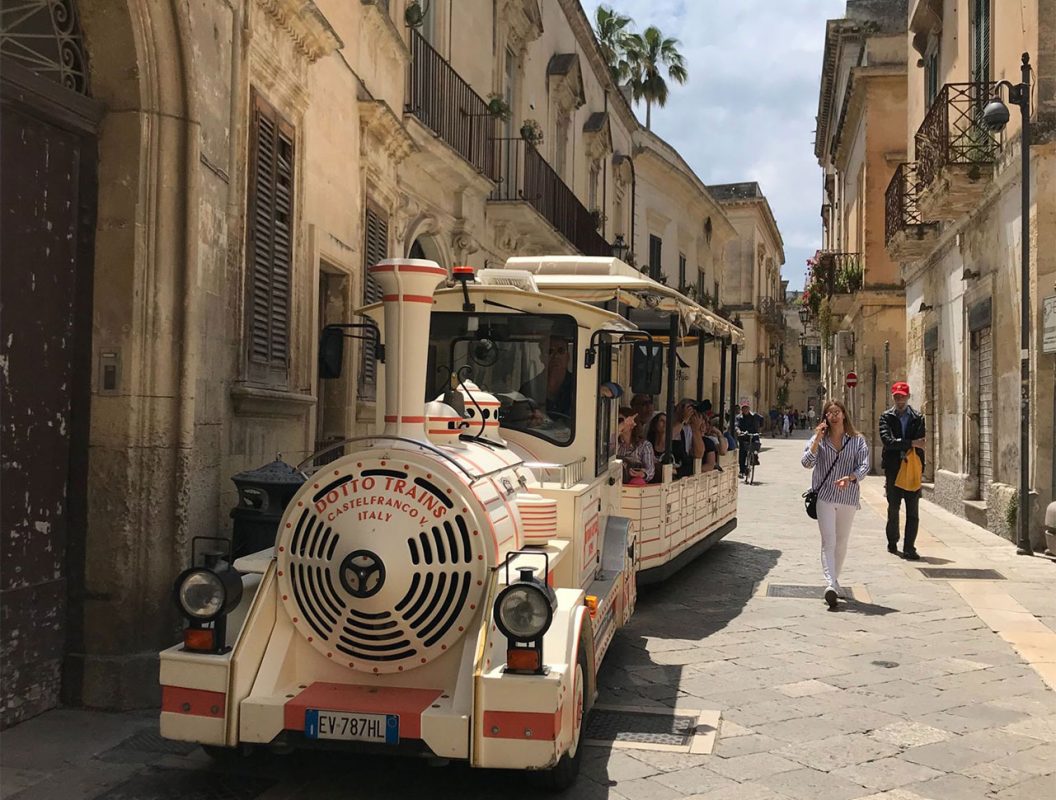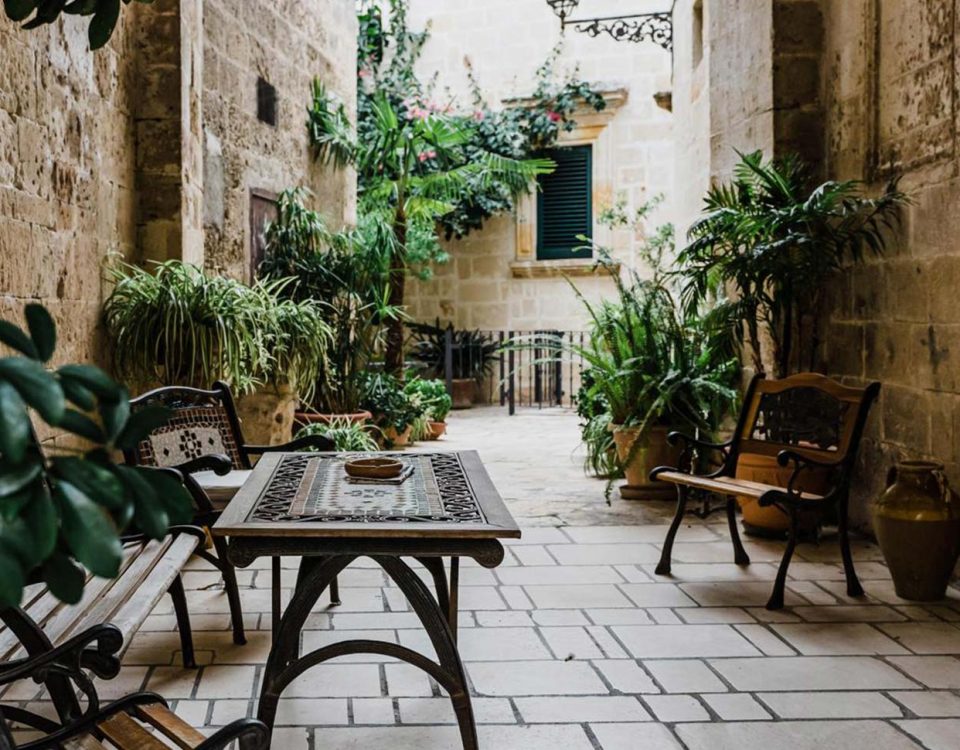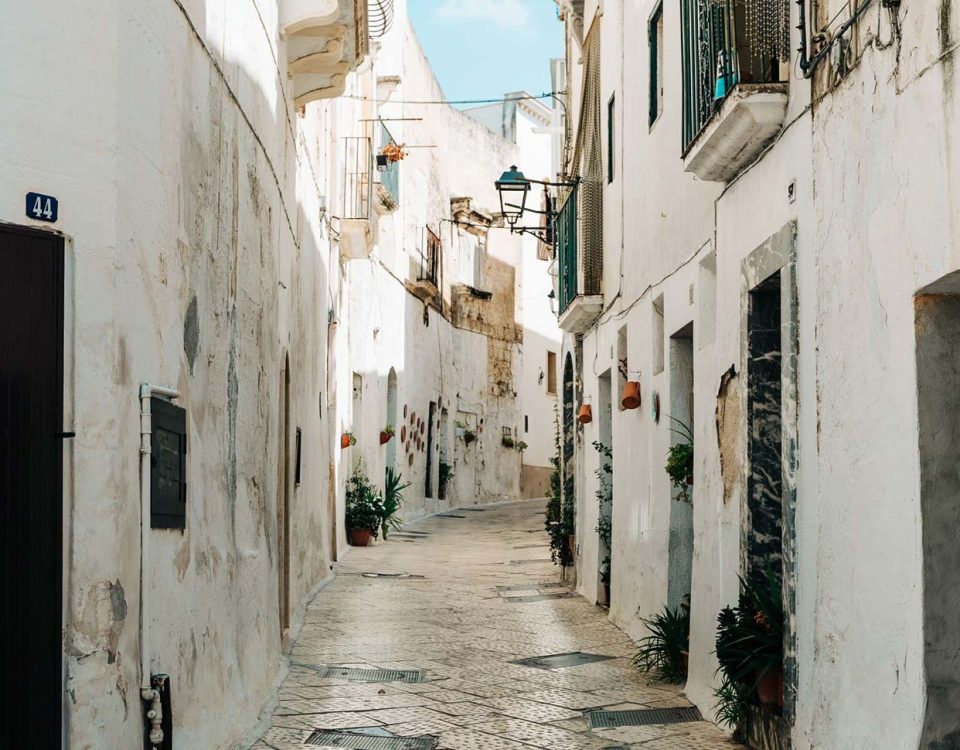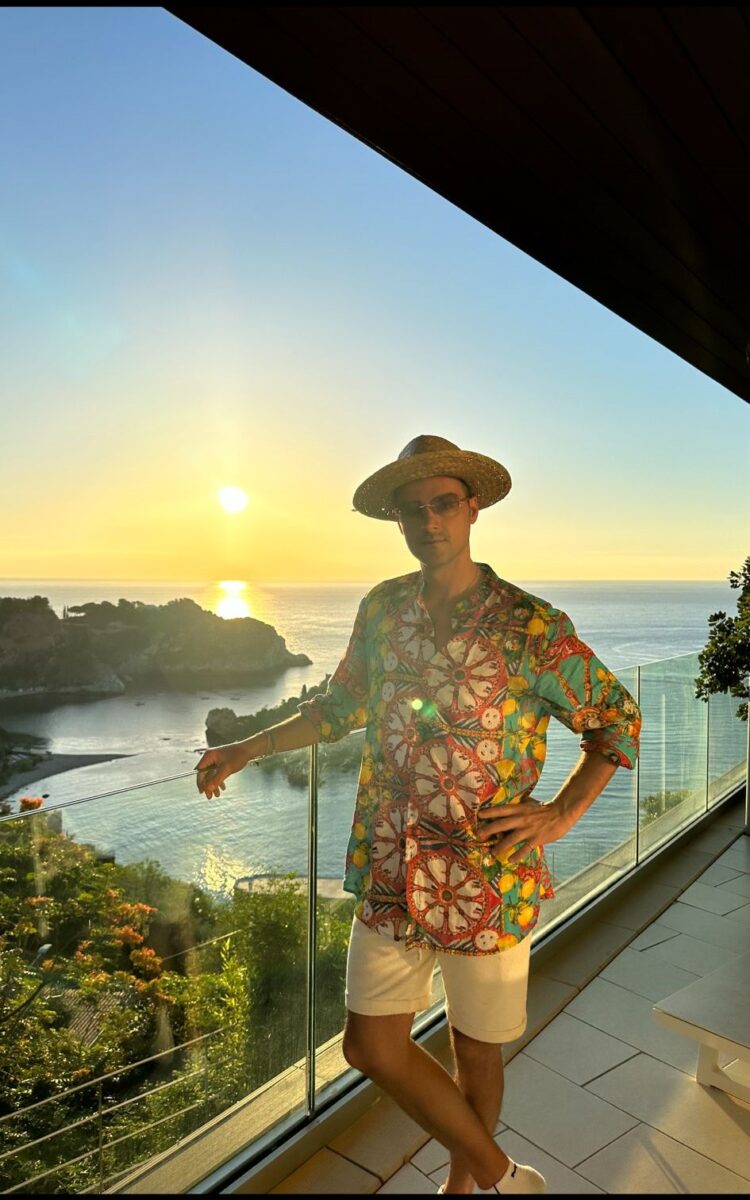10 Cool Things to Do and See in Lecce
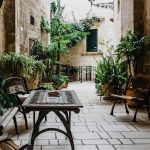
10 best restaurants in Puglia
July 23, 2023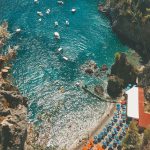
5 things to do while in Amalfi
July 31, 2023Table of contents
- A complete and detailed guide to the 10 cool things to do and see in Lecce in 1, 2, or 3 days.
- 1. The historic center of Lecce
- 2. The Amphitheater and Roman Theater of Lecce
- 3. Visit the Castle of Charles V in Lecce
- 4. Explore Piazza Sant'Oronzo in Lecce
- 5. Visit the Cathedral of Lecce
- 6 .The Basilica of Santa Croce in Lecce
- 7. The Churches of Lecce
- 8. Museo Faggiano
- 9. Abbazia di Santa Maria di cerrate:
- 10. Chiesa di San Fulgenzio:
- WHAT TO EAT IN LECCE
A complete and detailed guide to the 10 cool things to do and see in Lecce in 1, 2, or 3 days.
At some point, Lecce emerged from the crowded list of Italian art cities and became a destination that is no longer just for summer. The trend of "vacationing in Salento" greatly contributed to the knowledge of this splendid Apulian town, which until then was mainly appreciated by art lovers.
In fact, Lecce is not only a gateway to the "Maldives of Italy," but above all, it is a city rich in Roman, medieval, and Renaissance artworks and landmarks.
But Lecce is primarily a Baroque city, which is expressed here like nowhere else, exploding in a completely unique and specific way, earning it the nickname of "Baroque of Lecce." Gaudy decorations that enrich the facades of buildings, the intense colors of the Lecce stone: a soft and compact limestone, with warm and golden colors that lends itself very well to carving by stonemasons.
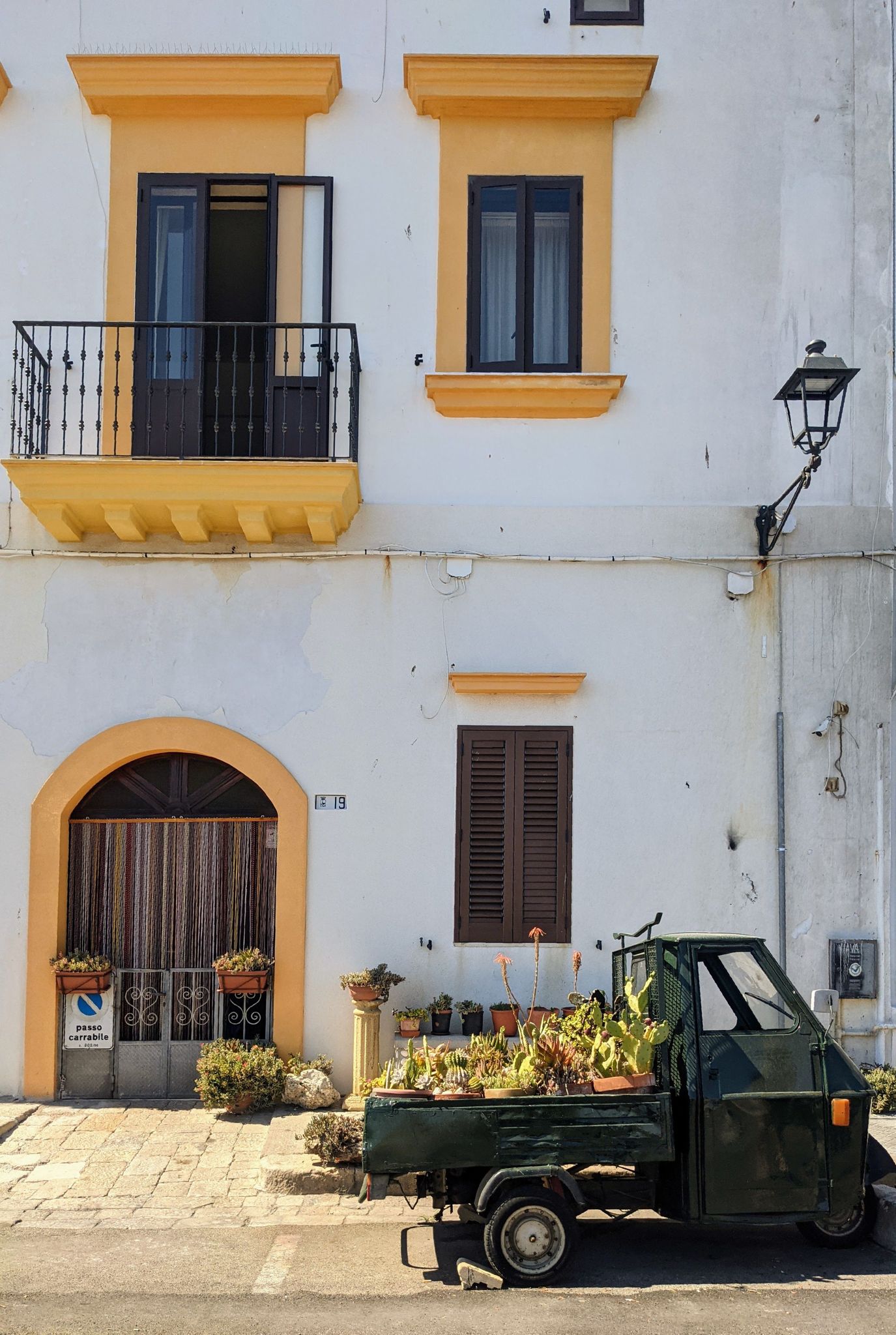
Baroque art spread in Lecce in the 17th century, during the Spanish domination, replacing classical art and creating a style that left room for imagination and creativity. The historic center is rich in examples of the workmanship of this stone in monuments, churches, but also in balconies and terraces of private homes.
But Lecce is not only characterized by Baroque: hospitable, organized, with great cuisine and an exceptional sea just a few steps away, it is one of the must-visit destinations in Italy. On this page, we recommend the 10 things you absolutely must see during a visit to Lecce.
1. The historic center of Lecce
Lecce is known as the "Lady of Baroque" and it is the Baroque art that characterizes the spires, portals, churches, monuments, and houses of the historic center. Passing through Porta Napoli, built in 1548 in honor of Charles V, you enter the old city.
From here, some of the most important streets of Lecce branch out, overlooking refined palaces and interesting artisan shops where objects made of paper mache and Lecce stone are crafted. Walking comfortably through the streets of the center, you will come across the Church of Santa Maria della Provvidenza in Piazzetta Baglivi and the Church of Santa Maria di Costantinopoli in Piazzetta Addolorata. On Via Umberto I, you can admire the 16th-century Palazzo Adorno and the Basilica of Santa Croce, a symbol of the city and Lecce Baroque.
Without much effort, you will reach the central nucleus of the city, which is the elegant Piazza Sant'Oronzo, the beating heart of city life, dominated by the famous column of the patron saint. You can also visit the scenic Piazza del Duomo with the lavish side facade of the Cathedral and its tall bell tower, the 15th-century Palazzo del Vescovado characterized by its angular arched loggia, and the 18th-century Seminary building, now home to the Diocesan Museum of Sacred Art, Innocenziana Library, and Diocesan Historical Archive.
For garden lovers, Villa Comunale, located near Piazza Sant'Oronzo, is a pleasant stop. Dedicated to Giuseppe Garibaldi, the Villa was once called by the people of Lecce the "Villa della Lupa" (Villa of the She-Wolf) due to the presence of a cage in which wolves were kept (the she-wolf is depicted in the city's coat of arms, as the city was called Lupiae by the Romans).
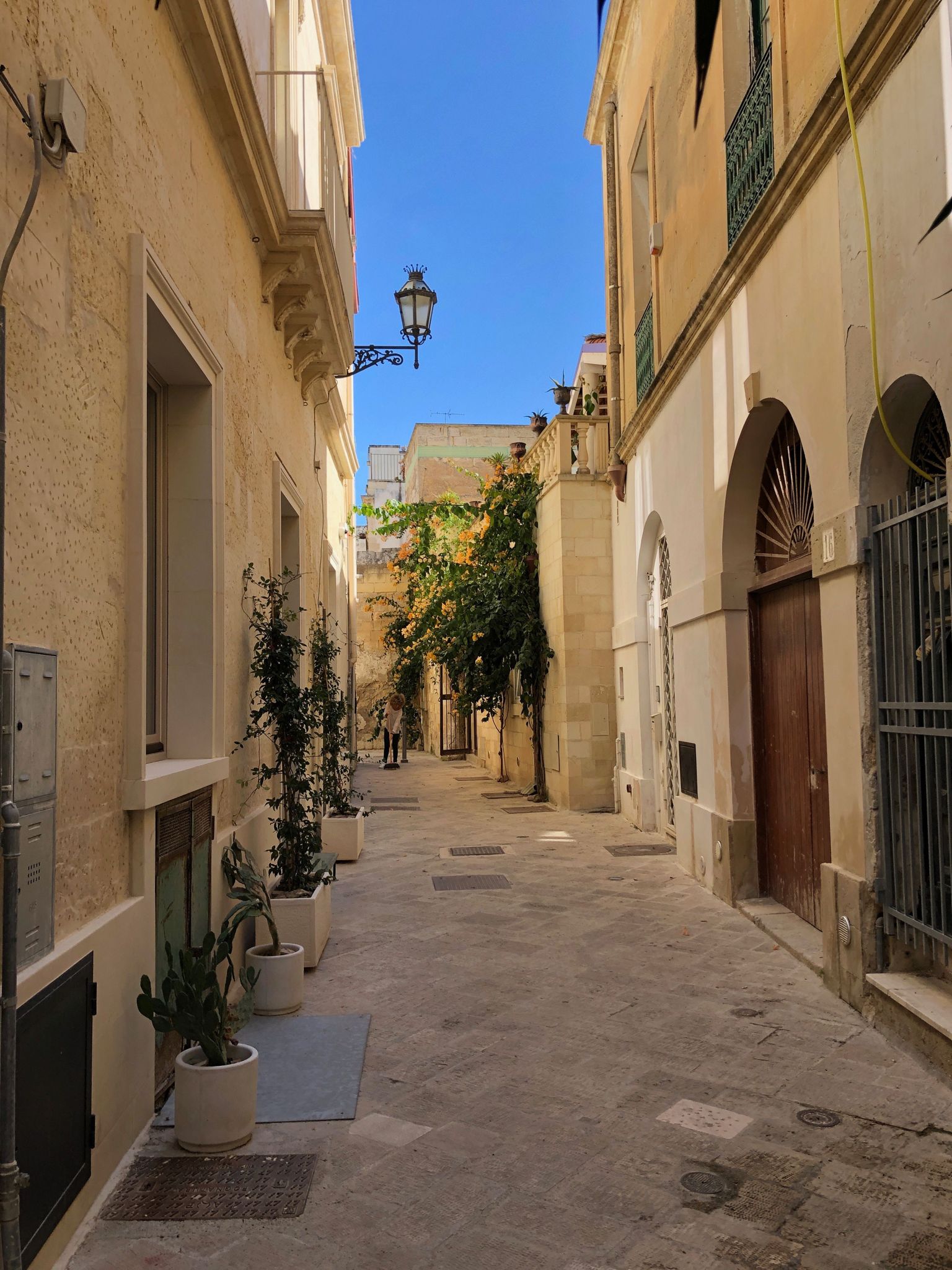
2. The Amphitheater and Roman Theater of Lecce
Together with the Theater (in Via Arte della Cartapesta), they are the most important Roman remains in Lecce. The Amphitheater was built in the 2nd century AD to entertain passionate spectators with shows and games (the building could accommodate about 20,000 people).
The monumental structure was completely buried by rubble following earthquakes and devastation, and only at the beginning of the 20th century, thanks to some excavation works, it was brought to light again. The currently visible part, which is situated lower than the street level, represents only about a third of the entire structure (in fact, the lower half of the covered grandstand), as the rest is likely still hidden beneath the central Piazza Sant'Oronzo where some historic buildings of the city stand.
The Roman Amphitheater was built with tuff pillars surmounted by an arched architecture. Among the recovered sculptures, the most interesting ones are a statue of the goddess Athena (now on display at the Castromediano Museum) and some marble reliefs from the balustrade that separated the two series of stands depicting hunting scenes and combats between men and fierce animals. Today, the Amphitheater serves as a backdrop for theatrical performances and concerts.
About 300 meters from the Amphitheater, there is another great Roman legacy in Lecce: the Roman Theater, built in the same period as the Amphitheater. It was discovered by chance in 1929 during some works in the gardens of two adjacent palaces. Still perfectly visible, the theater could accommodate up to 5,000 spectators.
Opening hours and ticket cost for the Amphitheater of Lecce:
Opening hours: It is possible to visit the Roman Amphitheater (except on days when performances are scheduled) by reservation at the Info Point Castello Carlo V (+39 0832.246517 - castellocarlov@gmail.com).
Ticket cost: Full price € 2.00; reduced price for groups of more than 10 people: € 1.00. Guided tour service: € 1.00 in addition to the entrance ticket price.
How to get there: On foot.
3. Visit the Castle of Charles V in Lecce
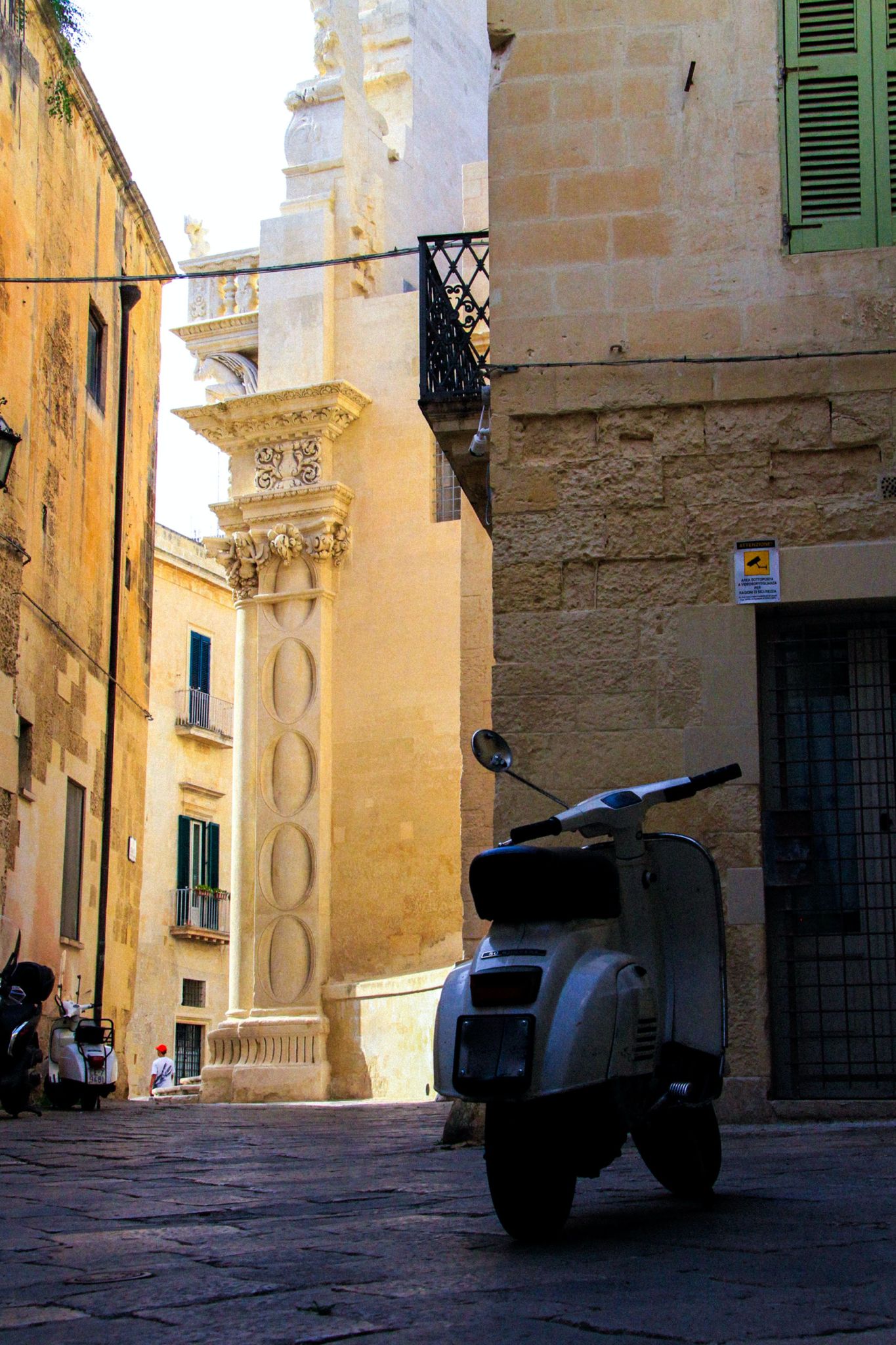 Located near Piazza Sant'Oronzo, the Castle of Charles V was built in 1539 by King Charles V. Designed by architect Gian Giacomo dell'Acaya, the construction required the demolition of the Chapel of the Holy Trinity and the Celestine Monastery of Santa Croce, which were then used to name two of the castle's towers.
Located near Piazza Sant'Oronzo, the Castle of Charles V was built in 1539 by King Charles V. Designed by architect Gian Giacomo dell'Acaya, the construction required the demolition of the Chapel of the Holy Trinity and the Celestine Monastery of Santa Croce, which were then used to name two of the castle's towers.
The castle, built on a pre-existing fortification from the XIII and XIV century, consists of two concentric structures separated by a courtyard, four angular bastions (S. Giacomo, S. Croce, S. Trinità, and S. Martino) with lanceolate peaks, sturdy walls, and a moat filled in 1872.
Originally used for defense, the castle later served as a theater for performances in the XVIII century and as a barracks and military district from 1870 to 1979. Today, the castle is owned by the Municipality of Lecce and houses the Department of Culture. Its rooms are used for cultural events, art exhibitions, and food and wine festivals. One of the highlights is the large Hall of the Duchess on the first floor with its ribbed vault and late Gothic capital columns adorned with leaf decorations and allegorical figures.
Opening hours and ticket prices for the Castle of Charles V:
Opening hours:
June and September: Monday - Friday from 9:00 am to 9:00 pm. Saturday, Sunday, and holidays from 9:30 am to 9:00 pm.
July and August: Monday - Friday from 9:00 am to 11:00 pm. Saturday, Sunday, and holidays from 9:30 am to 11:00 pm.
Ticket price: €5
How to get there: On foot.
4. Explore Piazza Sant'Oronzo in Lecce
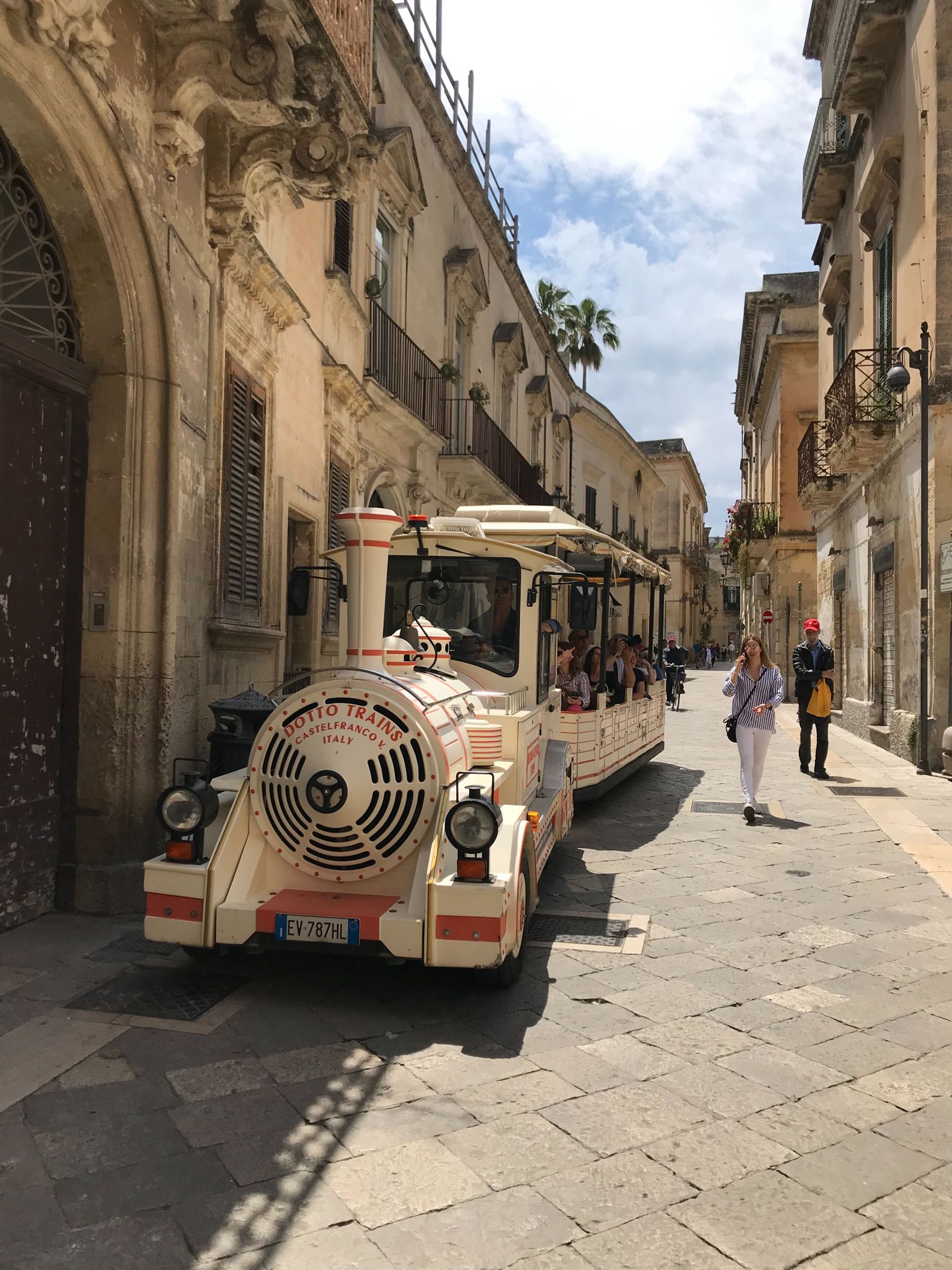
Piazza Sant'Oronzo is the main square of Lecce, the city's living room, and a historic meeting place. The oval-shaped square is adorned with a mosaic depicting the city's coat of arms: a she-wolf under an oak tree with a crown and five towers. The square is filled with shops, cafes, and offices.
The buildings surrounding the square were constructed between the Middle Ages and the 19th century, creating an eclectic architectural ensemble where different styles coexist harmoniously. In the past, it was known as the "merchants' square" due to the presence of numerous shops and commercial activities, which were later replaced by the building that was supposed to house the headquarters of the Bank of Italy in the 20th century.
Since 1656, the square has been named after the city's patron saint, Sant'Oronzo. Legend has it that during a plague epidemic in the Kingdom of Naples, Lecce was spared thanks to the mediation of Oronzo, the city's proto-bishop. As a sign of gratitude, the people of Lecce erected a votive column (29 meters) on the square, topped with a statue of the saint blessing the city.
The column of Sant'Oronzo is just one of the many attractions in the square, which is partially occupied by the remains of the Roman Amphitheater. It also houses the Sedile, also known as the Palace of the Seggio (1592) – or what remains of it (a square loggia with ogival arches). The Sedile was formerly the Town Hall and is now used for art exhibitions and exhibitions. Other notable buildings include the ancient Church of San Marco (next to the Sedile) and the Church of Santa Maria della Grazia, built in 1590 following the discovery of a 14th-century fresco depicting the Virgin and Child, which is still preserved in the church.

5. Visit the Cathedral of Lecce
The Cathedral of Lecce is located in the homonymous Piazza and represents the religious center of the city. The Cathedral, dedicated to the Virgin Mary Assumed into Heaven, was built in 1144 and underwent renovations in 1230 before being completely rebuilt in 1659 by Giuseppe Zimbalo, commissioned by Bishop Luigi Pappacoda.
Zimbalo, a local architect, also designed the five-story bell tower, the top of which is topped with an octagonal dome featuring an iron statue of Sant'Oronzo. The Cathedral has two entrances: the main entrance facing the Episcopal Palace and another on the left side facing the entrance. The main facade, adorned with sculptures of Saints Gennaro and Ludovico and the apostles Peter and Paul, is elegant and refined, contrasting with the more opulent secondary facade designed in the style of Lecce's Baroque architecture, culminating with the statue of Sant'Oronzo surrounded by statues of Saint Giusto and Saint Fortunato, co-patrons of Lecce.
The main facade reveals the interior's organization, divided into three naves separated by semi-columns. The central nave and transept are surmounted by a wooden ceiling adorned with works by Giuseppe di Brindisi, including "The Martyrdom of Sant'Oronzo" and "The Last Supper." The baroque interior also features precious stuccoes, marble floors, and numerous valuable paintings, as well as twelve richly decorated altars, including the main altar dedicated to the Assumption of the Virgin, made of marble and gilded bronze in the Neapolitan style.
Opening hours and ticket prices for the Cathedral of Lecce:
Opening hours:
April to September: 9:00 am to 9:00 pm every day
October to March: 9:00 am to 6:00 pm
Ticket price: €9
Includes the LeccEcclesiae itinerary: Cathedral - Santa Croce - Santa Chiara - San Matteo - Museum of Sacred Art.
How to get there: On foot, in Piazza Duomo.
6 .The Basilica of Santa Croce in Lecce
The Basilica of Santa Croce, along with the adjacent Celestini Convent (now Palazzo del Governo), is one of the most important architectural complexes in the city and, above all, the most significant example of Lecce's Baroque style, especially for the opulence of the decorations on the main façade.
Between the 16th and 17th centuries, the greatest architects of Salento - Riccardi, Penna, and Zimbalo - together with skilled stonemasons and carvers, worked on the construction of this grandiose work commissioned by the wealthy religious order of the Celestini.
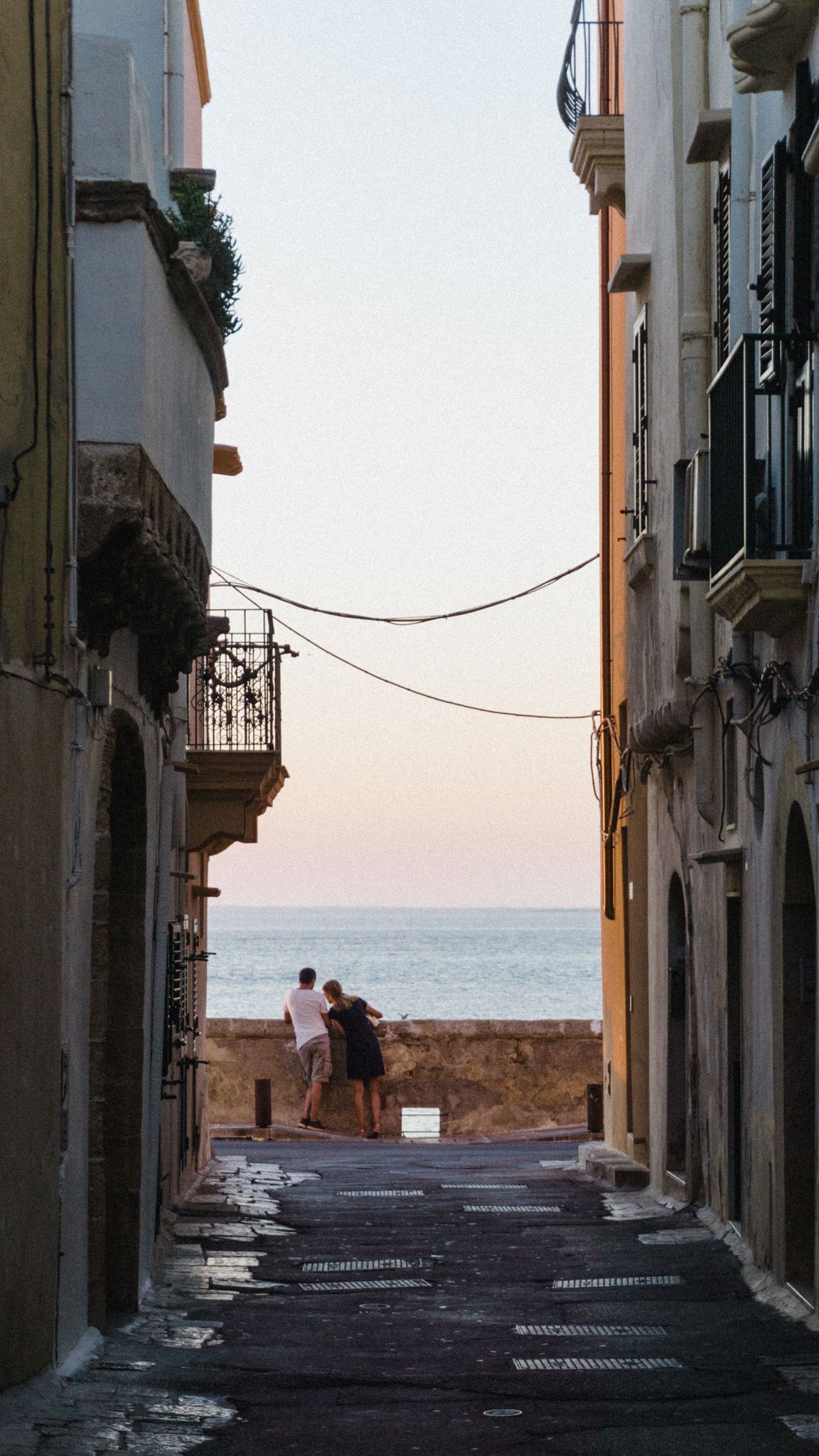
The result was astonishing: never before had Renaissance elements and Baroque elegance blended so harmoniously, giving life to a monument of such spectacular beauty. The façade of the basilica is composed of three parts.
The lower part, in Renaissance style, is divided by six smooth columns with zoomorphic capitals that support a richly decorated frieze with lions and bare-breasted women. Above the frieze, six human figures and seven animals (telamons) support the balustrade in Lecce stone, adorned with 13 cherubs embracing the symbols of temporal and spiritual power.
The side doors bear the coats of arms of the Celestini order and Santa Croce, while on the main portal, flanked by two pairs of columns, is the coat of arms of Philip III of Spain. The second part of the façade is dominated by the beautiful central rose window, inspired by the Romanesque style, flanked by two niches with the statues of St. Benedict and St. Celestine.
At the ends are two female statues symbolizing Faith and Fortitude. Finally, at the top, there is a tympanum depicting the triumph of the Cross. The interior, divided into three aisles by tall columns, is equally sumptuous. The central nave is surmounted by a wooden coffered ceiling with gilded decorations, while the side aisles have vaulted ceilings and feature seven richly decorated chapels on each side, housing paintings from the 17th and 18th centuries.
Of particular value is the chapel of San Francesco da Paola, with an altarpiece of six columns created by Zimbalo (1614-15), adorned with 12 panels depicting episodes from the life of the saint, considered one of the greatest sculptural expressions of Lecce's Baroque style.
Opening hours and ticket price for the Basilica of Santa Croce:
From April to September: 9 am to 9 pm every day
From October to March: 9 am to 6 pm
Ticket price: €9
Includes the LeccEcclesiae route: Cathedral - Santa Croce - Santa Chiara - San Matteo - Museum of Sacred Art
How to get there: On foot, in Via Umberto II.
7. The Churches of Lecce
Lecce, the city of churches. That's how the capital of Puglia is often defined, due to the large number and beauty of its religious buildings. In addition to the Cathedral and the Basilica of Santa Croce, a myriad of other churches (about 40) are scattered throughout the city.
Among the oldest, mention must be made of the Church of Santi Nicolò e Cataldo in the city cemetery. Built in the Middle Ages (1180) under the order of Tancredi d'Altavilla, the last Norman king, it was renovated in 1716, acquiring a Baroque style while preserving elements of its original style. The portal is decorated with arabesques and vegetal motifs, while the interior has a Latin cross plan with three narrow and high naves.
The adjoining convent is developed around two cloisters, in the oldest of which one can admire a magnificent shrine on spiral columns richly sculpted, placed as a covering for the Renaissance well.
Among the most unique is the Church of San Matteo (1667 - 1700) with its singular curved façade, reminiscent of the Roman church of San Carlo alle Quattro Fontane. The building has a complex Baroque façade with two orders, while the elliptical interior is delimited by arched chapels containing richly decorated altars. The one dedicated to San Matteo, with the wooden statue of the saint at the center (1691), is magnificent. The beautiful church dedicated to Sant'Irene, the patron saint of Lecce until 1656, is perfectly located in the city center.
Built in the 16th century by the Order of the Theatines, modeled after the churches of Sant'Andrea della Valle in Rome, Sant'Andrea delle Dame, and San Paolo Maggiore in Naples, the religious building features the statue of the saint on the main portal and the city coat of arms (a she-wolf under a crowned holm oak) on the high pediment. The interior has a single nave with three chapels on each side, with notable features being the altar dedicated to Santa Irene, richly decorated with statues and decorations, and the grand canvas by Tiso, the "Transfer of the Holy Ark" (1758), behind the main altar, as well as the painting of the Madonna della Libera in the sacristy.
Whether medieval, Renaissance, or Baroque in style, all the churches in Lecce, of which only a few examples have been mentioned, safeguard the historical, artistic, and religious heritage of the city.
8. Museo Faggiano
Located in Via Ascanio Grandi, Museo Faggiano is a unique museum hidden within a seemingly ordinary house in the historic center of Lecce. The owners discovered an unexpected archaeological site while renovating their house, uncovering relics that date back thousands of years. The museum showcases various finds, including a 5th-century floor, ancient grain silos, a 16th-century cistern, an embalming room, underground tunnels, tombs, and a deep well. This museum offers a fascinating glimpse into Lecce's hidden history and is a must-visit.
9. Abbazia di Santa Maria di cerrate:
Situated on the provincial road connecting Squinzano and Casalabate, Abbazia di Santa Maria di Cerrate is a magnificent example of Salento's Romanesque architecture. Legend has it that the abbey was built in the 12th century after Tancredi d'Altavilla had a vision of the Madonna among the antlers of a deer. The abbey served as an important religious center until the 16th century when it was looted and abandoned. Today, the church still retains its ancient beauty, with a facade adorned with intricate carvings depicting the Annunciation, the Visitation of Saint Elizabeth, the Magi, and the Flight to Egypt. Inside, visitors can admire 13th and 14th-century frescoes. The nearby Museo delle Tradizioni Popolari, housed in the former olive press of the abbey, displays frescoes removed during restoration works. A visit to Abbazia di Santa Maria di Cerrate provides a glimpse into the region's religious and artistic heritage.
10. Chiesa di San Fulgenzio:
Located slightly outside the city center, Chiesa di San Fulgenzio is an early 20th-century church dedicated to Saint Anthony of Padua. It was historically entrusted to the Franciscan friars, providing them with a permanent place to settle after moving between various convents in the city. The church's architecture combines elements of Romanesque and neo-Gothic styles, setting it apart from the more typical Baroque churches in Lecce. Inside, visitors will find a neo-Gothic interior with three aisles adorned with chapels and altars. The church exudes a sense of Franciscan spirituality, enhanced by the sunlight streaming through the windows. The complex iconography created by the friars to draw attention to this peripheral parish is another highlight. The church also features a beautiful cement floor, paintings by local artists, marble altars, and precious frescoes. After exploring the church, a visit to nearby Piazza Mazzini is recommended, where you can find a monumental fountain and various shops for shopping.
These three attractions offer unique experiences in Lecce, showcasing the city's hidden treasures, religious heritage, and ancient history.
WHAT TO EAT IN LECCE
Lecce, is renowned for its delicious cuisine. The combination of fresh produce from the land and the bountiful sea offers a variety of traditional Salento dishes. The flavors of the Mediterranean scrub, such as sage, mint, oregano, and rosemary, enhance the taste of each dish.
Vegetables and legumes are staples in Lecce's cuisine, often cooked in terracotta pots and seasoned with extra virgin olive oil. They are typically served with friselle, which are toasted and biscuit-like bread. One of the notable dishes is the "rustico leccese," made of two layers of puff pastry filled with mozzarella, béchamel sauce, tomato, pepper, and nutmeg. Another popular dish is the "puccia," a small and round durum wheat bread that often contains black olives in the dough. Beware of the olives' pits!
If you are open to more adventurous tastes, you should try "municeddhe," which are snails harvested when they have a white membrane around their opening, resembling the color of a nun's habit (hence the name "mudiceddhe" meaning "nuns"). Lecce also boasts a variety of tempting desserts made with almond paste, including the famous "pasticciotto leccese," which must be enjoyed warm.
And let's not forget about the wines! Lecce is known for its indigenous wines, such as Negramaro, Salice Salentino, and Primitivo di Manduria. These wines are beloved for their rich color and bold flavor.
When visiting Lecce, make sure to indulge in its culinary delights. From fresh vegetables and legumes to delectable pastries and aromatic wines, the city offers a true taste of the Salento region.

